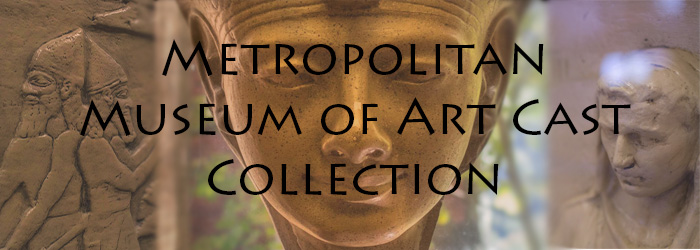
Description
Plaster cast of a statue depicting the goddess Hathor in the form of a cow protecting the government official Psamtik. Original housed in the Cairo Museum, Egypt. Site of origin is the Tomb of Psamtik, Saqqara necropolis, Memphis, Egypt, circa 664-332 BCE (the Late Period).
Publication Date
1978
Type of Artwork
Statue
Time Period/Geographical Region
Ancient Egypt
Height (cm/in)
101.6 cm / 40 in
Width (cm/in)
106.68 cm / 42 in
Depth (cm/in)
29.21 cm / 11.5 in
Disciplines
Ancient History, Greek and Roman through Late Antiquity | Sculpture
Recommended Citation
Morehead State University. Camden-Carroll Library., "Group representing Hathor in the form of a Cow" (1978). Metropolitan Museum of Art Cast Collection. 31.
https://scholarworks.moreheadstate.edu/metropolitan_art_collection/31
Files
Download Image (1.3 MB)


Comments
This statue is one of three that a Egyptian man named Psamtik, a government official in the Twenty-sixth Dynasty, commissioned, most likely for a temple, at a site known as Saqqara. Psamtik, who was the Overseer of Sealers, is depicted in his official capacity with a seal hung from a cord around his neck, wearing a long kilt, on which hieroglyphics (the Egyptian form of writing) have been inscribed. He stands under the chin of a cow that wears a plumed headdress like the goddess Hathor, whom she represents. It is unusual that the animal form of the goddess dominates the sculpture, towering over the human Psamtik. Some scholars believe this is because in the political uncertainty of the Late Period of Egypt, Egyptians came to depend more and more on their all-powerful deities for protection.